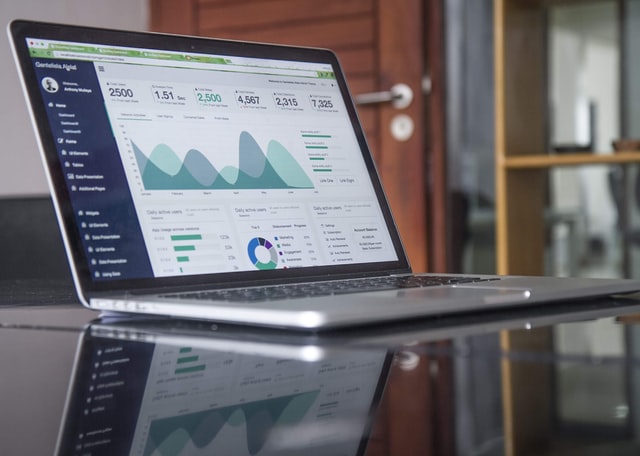6 Small Business Goals to Set This Year

Business owners of all kinds can agree that 2020 was among the most challenging years in recent memory. In 2021, we’ll begin the long, hard road to getting back to work and building a stronger, more resilient “new normal” — and small businesses will have to marshal every resource available to them to ensure that they can thrive in the coming years.
It’s important to keep your small business’s goals attainable while simultaneously pushing your capabilities and creating a better future. For any business owner who wants to ensure that 2021 is a year of growth in the most critical areas, here are six ideas for how to refine your model, deepen your relationships and find a better way forward.
Perform a SWOT analysis.
There’s never been a better time to take an overall look at your business and look for ways to improve. The SWOT framework — Strengths, Weaknesses, Opportunities and Threats — is a widely-used model for this task. Get out that whiteboard (or whiteboard wall sticker, or sheet of notebook paper, or whatever you use) and start strategizing.
Here’s the basic framework of SWOT:
- Strengths: Your firm’s advantages that can give it an edge over the competition
- Weaknesses: Your firm’s weak points that could create future or current challenges
- Opportunities: Current trends that could allow you to leverage your firm’s strengths to gain a leg up
- Threats: Current trends that create a need for your firm’s weaknesses to be shored up to avoid problems
It sounds simple because it is — but it’s also really effective at qualifying your business’s tangible and intangible assets. Of course, qualitative analysis like this needs to be paired with quantitative analysis, which is why a round of budget work could be just what the doctor ordered.
Analyze and strengthen your cash flow.
A business with a healthy cash flow is one that’s better equipped for the choppy waters of the post-pandemic economy. As operations begin to ramp back up, it’s essential to look carefully at your business’s liquidity and make plans to stay flexible and agile in the new year.
Start by performing a cash flow analysis to get an accurate picture of your finances. To make your spending smarter, dig down into your business’s expenditures, investments, income, and accounts payable and receivable. This will help you see the nitty-gritty details of your business model and give you a better understanding of how to keep more liquid capital available.
Become more aligned with your team members’ needs and desires.
Strong employer-team member relationships will continue to be critical as small businesses seek to build a sustainable framework for the future. That’s why the beginning of the year is the perfect time to talk candidly to your team members about their goals, their hopes, their fears and how you can work together to build a better business.
Performance reviews are the time when employers traditionally address this, but don’t be afraid to branch out of that limited space. In a small business, having casual conversations with team members is just as valid of a method for learning about their ambitions, goals and desires. What you hear might not always necessarily be what you want to hear, but it’s vital that you know it exists so you can plan for it.

Research your market and your demographics.
Team members are half of the equation that creates successful human dynamics for a small business, and customers, of course, are the other half. It will be important to have a strong idea of what your customers want in 2021, especially since it might not be exactly the same as what they wanted before the pandemic.
As the new year begins, dig into some in-depth market research and find out how your market and your demographics are growing and changing. Take the time to run an analysis on your sales figures, paying special attention to how things looked before COVID-19 and after. Observe the changes and ask which ones are likely to be temporary or permanent. Look at scenarios in which you might need to pivot your business model and think about how you could execute them.
Create a five-year plan.
In times of stress and strife like the early 2020s, planning can seem almost irrelevant. After all, we can barely predict what course the pandemic will take a month from now, let alone by next year. But that doesn’t mean you shouldn’t have a plan for the actions your business will take under a variety of possible conditions.
A flexible five-year plan crafted using feasible expectations and founded on solid data will be an invaluable asset as your business navigates our uncertain future. To make your plan more adaptable, try including branching scenarios within your plan and developing a set of basic procedures based on each one.
Refine your branding.
With another so-called “great reset” headed our way, now is a great time to look carefully at your branding and decide whether it’s serving your business’s needs. From your logo to your website to the decor of a brick-and-mortar space, put it all on the table and ask whether your branding is communicating with your customers in a way that’s helpful and aligned with your values.

Small businesses sometimes tend to let old branding elements from their early days hang around too long. If you’re still using the logo you threw together in Illustrator when starting your business, or the look of your space hasn’t been updated in years, think about which elements might be showing their age and are due for a replacement. Hiring a designer or making cosmetic changes like adding some contemporary peel and stick wallpaper can be quicker than you’d think and make a substantial difference.

